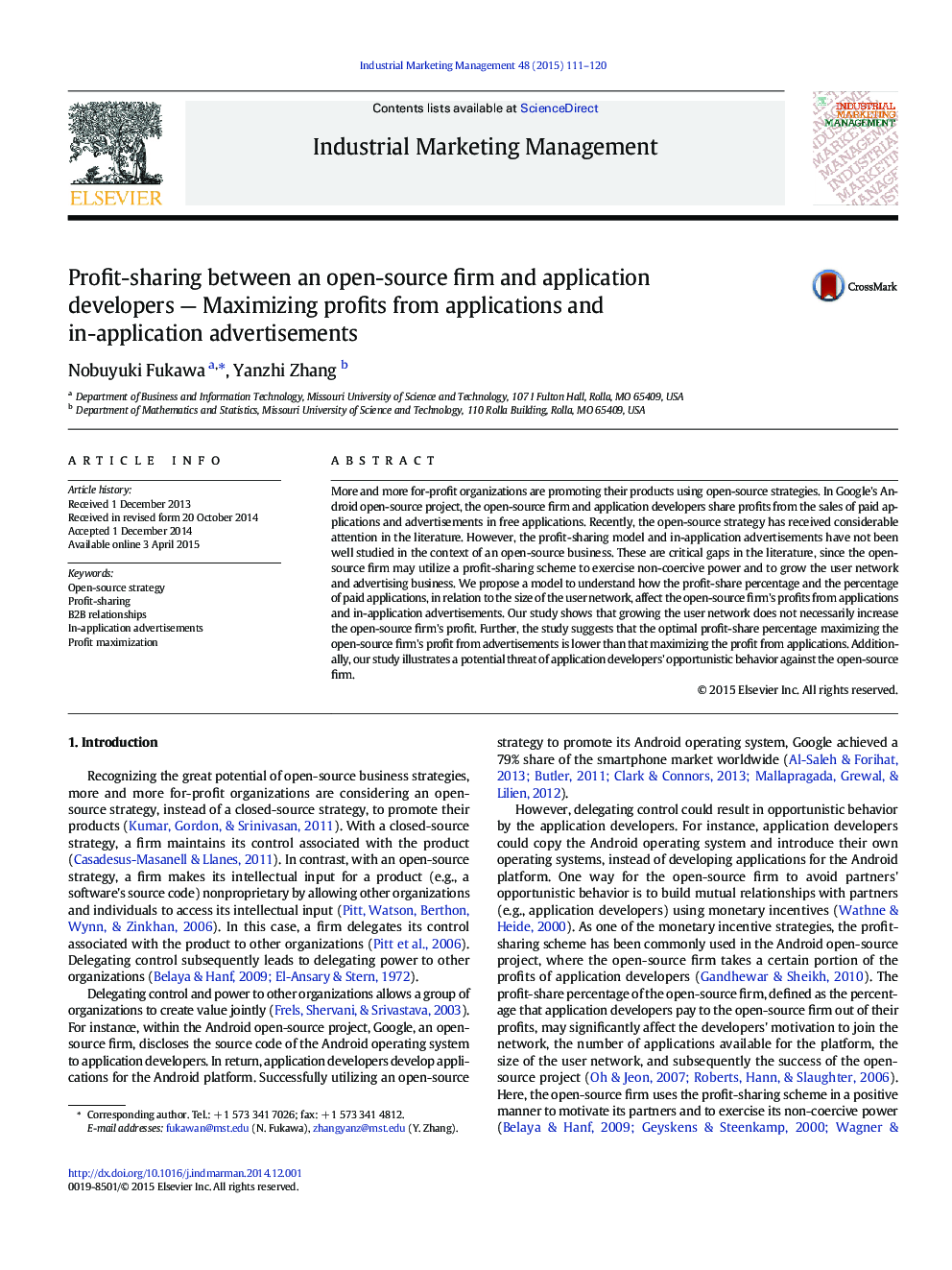| کد مقاله | کد نشریه | سال انتشار | مقاله انگلیسی | نسخه تمام متن |
|---|---|---|---|---|
| 1027533 | 1483454 | 2015 | 10 صفحه PDF | دانلود رایگان |
• We study how the profit-share percentage and the percentage of paid applications affect profits of an open-source firm.
• We analyze how the open-source firm maximizes its profits from applications and in-application advertisements.
• Our study shows that growing the user network does not necessarily increase the open-source firm's profit.
• The optimal profit-share percentage in an advertising business is lower than that in an application business.
• Our study illustrates a potential threat of application developers' opportunistic behavior against the open-source firm.
More and more for-profit organizations are promoting their products using open-source strategies. In Google's Android open-source project, the open-source firm and application developers share profits from the sales of paid applications and advertisements in free applications. Recently, the open-source strategy has received considerable attention in the literature. However, the profit-sharing model and in-application advertisements have not been well studied in the context of an open-source business. These are critical gaps in the literature, since the open-source firm may utilize a profit-sharing scheme to exercise non-coercive power and to grow the user network and advertising business. We propose a model to understand how the profit-share percentage and the percentage of paid applications, in relation to the size of the user network, affect the open-source firm's profits from applications and in-application advertisements. Our study shows that growing the user network does not necessarily increase the open-source firm's profit. Further, the study suggests that the optimal profit-share percentage maximizing the open-source firm's profit from advertisements is lower than that maximizing the profit from applications. Additionally, our study illustrates a potential threat of application developers' opportunistic behavior against the open-source firm.
Journal: Industrial Marketing Management - Volume 48, July 2015, Pages 111–120
